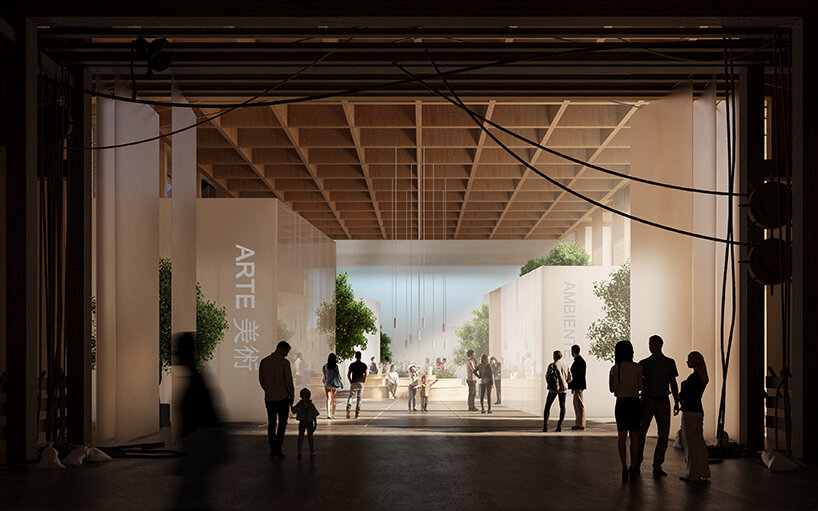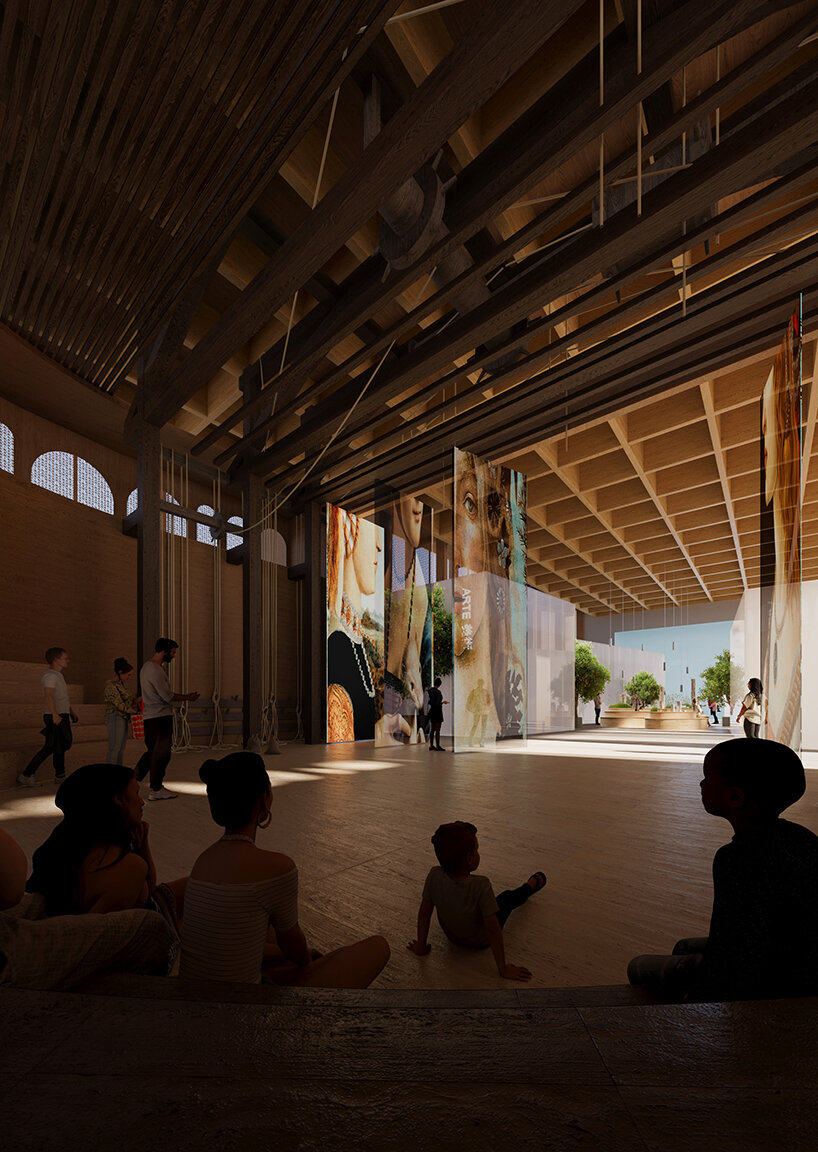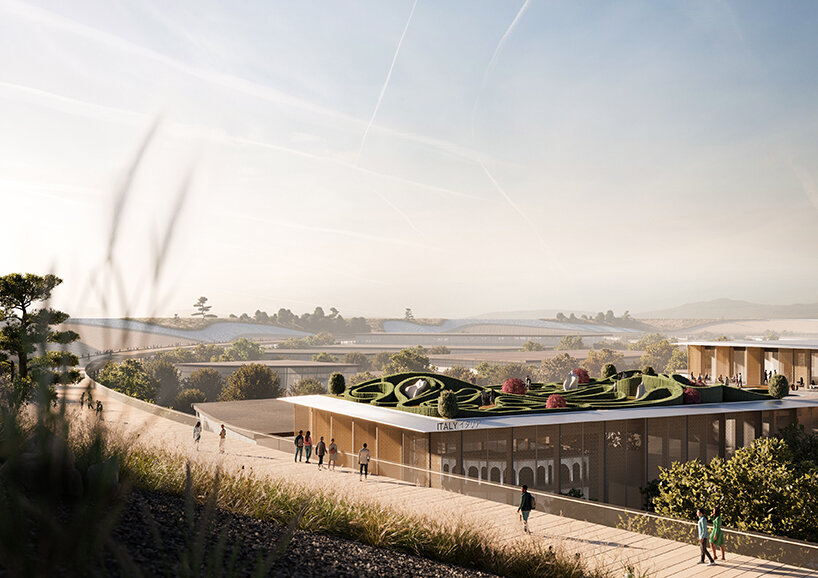Mario Cucinella Architects’ Italian Pavilion at Expo 2025 Osaka
Expo 2025 Osaka – Italian Pavilion | all renders © Mario Cucinella Architects
recreating the essence of italian culture

an immersive recreation of the Ideal City
the ideal city experience with a theater & italian garden
This dramatic experience is divided into three separate ‘acts’, each rooted in locations and experiences in which Italy has been an innovator. The first act is the theater; Italy’s theatrical heritage (in the architectural space, technological innovation, and revolutionary acting methods) is limitless. Visitors to the Theater will experience an alteration of their perceptions and possible future scenarios will suggest themselves; the spectator will become interchangeable with the actor, and the real will become indistinguishable from the virtual, in an immersive, multisensory theatrical space that subjects the spectator to visual suggestions along with sounds, movements, and colors.
Next up is the Ideal City. First developed as a theme in fifteenth century painting to represent the theoretical Renaissance concept of the Ideal City, this concept is depicted as a place of deafening emptiness, where the absence of human life made Utopia a dystopian, metaphysical place. That consideration will be an opportunity to bring back people, nature, sustainability, and life to the center of the future Ideal City. The latter would combine an inclusive, social approach to quality and craftsmanship with new technologies — creating a space for narrative, in-depth knowledge, and creation. This section of the pavilion includes a series of modern workshops, each dedicated to a different theme: technology and energy; food and the environment; manufacturing and design; and art and architecture.
The last act unfolds as the Italian Garden on the roof of the Pavilion, a place for leisure and delight. MCA reworked the classical idea of the labyrinth, offering an opportunity for visitors to experience a new equilibrium between human and plant life, and between the natural and the artificial, balancing the organic originality of life with the rationality of human design.

a timber structure infused with light
a low-impact & timber design following the circular economy
Material-wise, following an analysis of Osaka’s climate and environmental impact, the architects decided to operate the construction site as a circular economy. For that purpose, the priorities include using products of natural origin, short supply chains, recycled content, avoiding toxic ingredients, and obtaining sustainability certifications. The structural framework will thus mainly comprise timber — one of the most readily available materials — sourced from certified local supply chains, and contamination will be minimized by giving preference to mono-material components.
At the end of its lifecycle, the Pavilion will become a mine for materials. The characteristics of each element will be such that they can be adapted to new requirements by undergoing natural processes of transformation that require no further processing. After Expo 2025 Osaka closes down, the Pavilion is intended to become an archive for display as an ‘Italian Workshop’: a database of Italy’s best practices, patents, projects, sustainable ideas, collaborations between human intelligence and artificial intelligence, social successes in respect of integration, commercial partnerships between companies, and agreements between countries. ‘In keeping with the Expo subtheme Saving Lives and with the objectives of the SDGs, the project […] and the compositional, technological, and material decisions involved in it, will promote a renewed balance between man, nature, and technology and can become a powerful tool for promoting and inspiring action, and for establishing new synergies to develop a more sustainable future,’ shares MCA.

merging craftsmanship with new technologies

outdoor view of the pavilion
